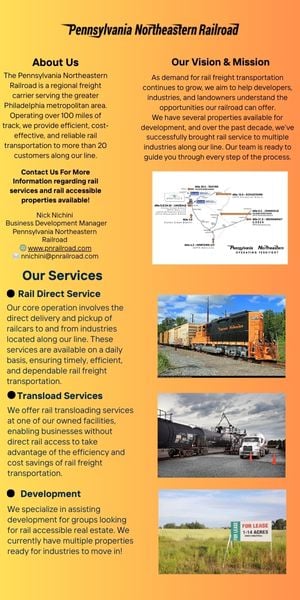Chapter Check-In: NAIOP San Francisco Bay Area

The global tech and life sciences hub continues to see significant investments despite the pandemic.
“The Bay Area is where intellectual capital meets venture capital,” says NAIOP San Francisco Bay Area President Adam Lasoff, managing director in the San Francisco office of JLL Capital Markets Americas.
The region is world renowned as a hub for technology and life sciences, and the intense focus on investment in those sectors has a huge impact on real estate development around San Francisco and Silicon Valley.
Of course, the CRE industry is important to California’s economy as a whole. According to NAIOP’s “Economic Impacts of Commercial Real Estate 2020” report, commercial real estate contributes $34.5 billion to California’s GDP, generates $13.6 billion in wages and salaries, and creates or supports more than 235,000 jobs.
Lasoff spoke to Development magazine about commercial real estate in the Bay Area.
Development: How are the market conditions for member companies in the Bay Area?
Lasoff: The major tech companies continue to hire in the Bay Area. According to EMSI hiring analytics, job postings for Facebook, Amazon, AirBnB, Apple, Alphabet, Netflix, Salesforce, Square, Nvidia, Intel, Tesla, Twitter, Microsoft and Pinterest have actually increased compared to the fourth quarter of 2019. In fact, there were approximately 20,000 job postings for technology, sales and management positions in the Bay Area in Q4 2020 compared to 19,000 for Q4 2019.
Through the fourth quarter of 2020, Bay Area start-ups received $47.1 billion in venture capital (VC) investment, approximately 42% of total VC domestic spending. On the exit side, 44 firms went public in 2020, realizing a market cap of over $225 billion. While the stock market is not a reflection of the economy, it does boost a company’s capacity to invest and grow. It also results in considerable dry powder for its investors (i.e. VC houses), enabling them to re-invest their returns into additional start-ups. They are likely to take on new ventures, and a good share of their “winnings” will likely be invested in the Bay Area.
Development: What are the challenges you’re facing in either the business or regulatory climate in California and the Bay Area?
Lasoff: Near-term challenges relate to reconciling and grappling with the many inconsistencies between local and state orders and requirements in connection with the COVID-19 pandemic (i.e. time periods on eviction moratoriums, safety and health regulations required by landlords, etc). Longer term, the city of San Francisco policymakers and voters continue to show a propensity for raising taxes and increasing regulations on business and commercial real estate. This past November, three new taxes were levied that will have a significant impact on the climate of local business and, as an extension, commercial real estate. San Francisco’s Proposition I increases the transfer tax rate on real estate sales and leases of 35 years or more to 5.5% for transactions between $10 million and $25 million and to 6% on transactions of more than $25 million. Proposition L adds a gross-receipts tax on companies whose CEOs earn more than 100 times the median employee salary. Proposition F increases the tax rates for the existing gross-receipts tax that the city imposes.
Development: During the height of the pandemic, there were a fair number of media reports that suggested investment might flee urban areas like San Francisco. But in early March, Kilroy Realty sold The Exchange building in San Francisco for $1.1 billion. At $1,440 per square foot, it was the highest price ever paid for a major property in San Francisco. Is that a sign that investment remains strong in the Bay Area?
Lasoff: The fact that a major institution invested over $1 billion in one fell swoop should imply that San Francisco continues to be top global gateway market. It also underscores the fact that the West Coast office REITS continue to be undervalued based on where their assets are trading in the private market.
Development: What are the big opportunities in commercial real estate in the Bay Area right now?
Lasoff: We see the life sciences sector benefitting the most in the near term. While Boston has the highest concentration of life science workers as a percentage of the workforce, the Bay Area has the largest number of workers with over 130,000. It ranks second in National Institutes of Health funding behind Boston with $1.6 billion in investment but first in private investment with over $21 billion in investment over the last five years. Successful biotech IPOs have only accelerated private investment in life sciences with $3.1 billion invested in Bay Area companies in the third quarter of 2020 alone. We are the tip of the spear in the life science cycle and expect to see sustainable tenant demand both in the Tier 1 locations (i.e. the Peninsula and East Bay) along with new pioneering locations in both San Francisco and Silicon Valley.
Development: What are some of your legislative priorities?
Lasoff: Our chapter is making a renewed focus on outreach and relationships with local policymakers, especially in the city of San Francisco. We have engaged hometown public relations expertise and partnered with the local Chamber of Commerce on certain initiatives to help drive support for small businesses. We feel that proactively meeting with local policymakers to introduce our organization and tell the story about who we are as a commercial real estate industry is the best way to get a seat at the table that ultimately will drive policies that support real estate and the wider business community.
Development: Education is an important part of NAIOP’s mission. Have there been recent educational sessions specific to the Bay Area or your chapter recently?
Lasoff: In April 2020, our chapter launched a robust and popular new program called the “NAIOP SFBA Zoom-in Webinar Series.” In 14 one-hour webinars, we have featured 46 highly respected local industry professionals leading critical dialogues around the topics on everyone’s mind related to the public health crisis and its impact on our industry. Topics included San Francisco Bay Area office leasing, capital markets, debt markets, local retail leasing, life sciences and many more. We are looking forward to continuing to provide these unique local insights for our members in 2021.
Trey Barrineau is the managing editor of publications for NAIOP.








